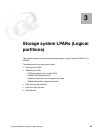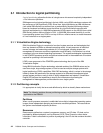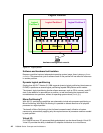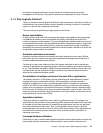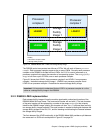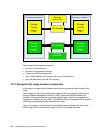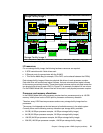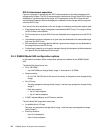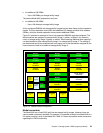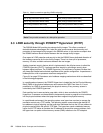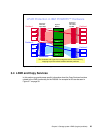
48 DS8000 Series: Concepts and Architecture
application on separate smaller partitions can provide better throughput than running a single
large instance of the application.
Increased flexibility of resource allocation
A workload with resource requirements that change over time can be managed more easily
within a partition that can be altered to meet the varying demands of the workload.
3.2 DS8000 and LPAR
In the first part of this chapter we discussed the LPAR features in general. In this section we
provide information on how the LPAR functionality is implemented in the DS8000 series.
The DS8000 series is a server-based disk storage system. With the integration of the
POWER5 eServer p5 570 into the DS8000 series, IBM offers the first implementation of the
server LPAR functionality in a disk storage system.
The storage system LPAR functionality is currently supported in the DS8300 Model 9A2. It
provides two virtual storage systems in one physical machine. Each storage system LPAR
can run its own level of licensed internal code (LIC).
The resource allocation for processors, memory, and I/O slots in the two storage system
LPARs on the DS8300 is currently divided into a fixed ratio of 50/50.
Between the two storage facility images there exists a robust isolation via hardware; for
example, separated RIO-G loops, and the POWER5 Hypervisor, which is described in more
detail in section 3.3, “LPAR security through POWER™ Hypervisor (PHYP)” on page 54.
3.2.1 LPAR and storage facility images
Before we start to explain how the LPAR functionality is implemented in the DS8300, we want
to clarify some terms and naming conventions. Figure 3-2 on page 49 illustrates these terms.
Note: The allocation for resources will be more flexible. According to the announcement
letter IBM has issued a Statement of General Direction:
IBM intends to enhance the Virtualization Engine partitioning capabilities of selected
models of the DS8000 series to provide greater flexibility in the allocation and
management of resources between images.






